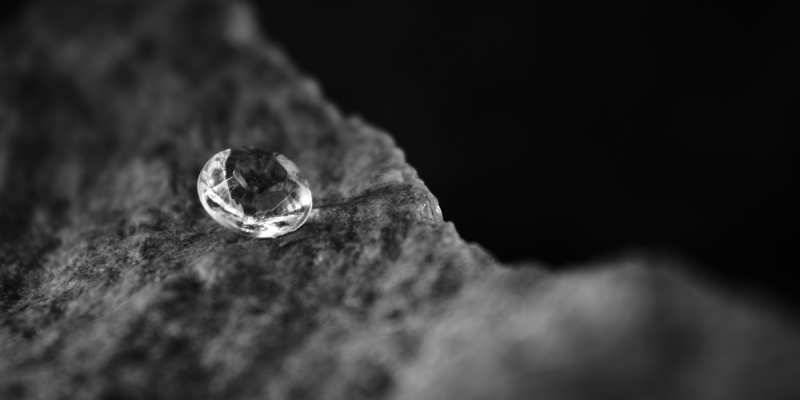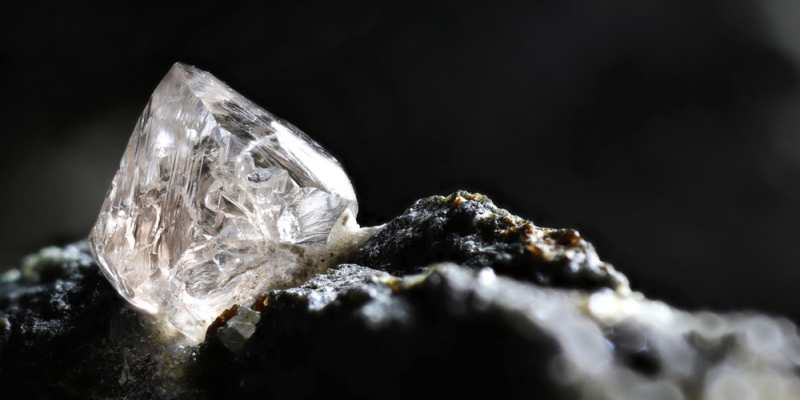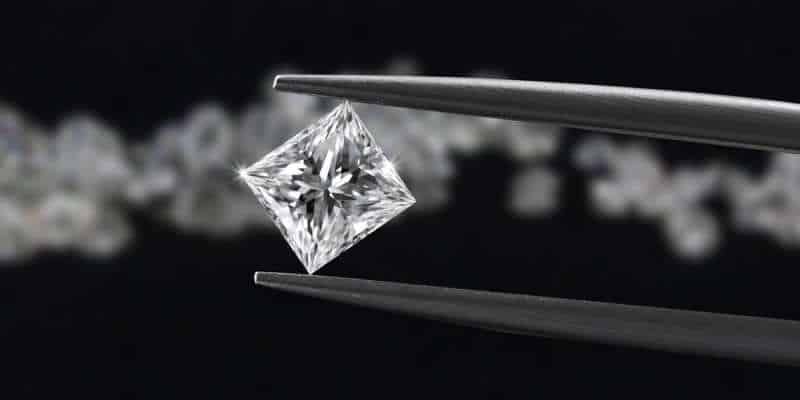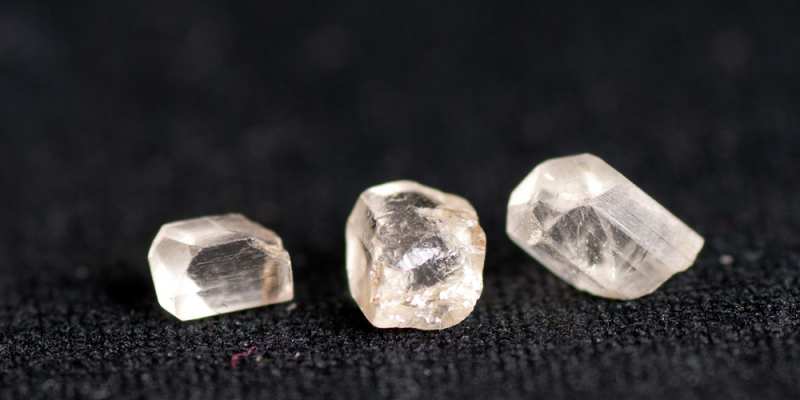Diamonds are renowned for being one of the hardest substances on Earth, a fact that has been reiterated countless times. However, the reasons behind their exceptional hardness remain unknown to many.
Today, we embark on a mission to shed light on the origins of diamond hardness and reveal some lesser-known facts about this remarkable characteristic. To begin, let’s explore a fascinating tidbit: Diamonds have been employed for various unique purposes throughout history, owing to their unparalleled hardness.
Indeed, diamonds have long been utilized for precise cutting of tough materials precisely because of their extraordinary hardness. These intriguing details will provide insights into why diamonds possess such remarkable hardness and how this quality has been harnessed for specific applications. So, let’s delve into the captivating world of diamond hardness and uncover the secrets behind its enduring reputation.
DESIGN YOUR OWN ENGAGEMENT RING: START WITH A SETTING OR START WITH A DIAMOND. IT’S REALLY UP TO YOU!

How Are Diamonds Made & Where Does The Hardness Come From?
The remarkable hardness of diamonds can be attributed to the intricate process by which they form and grow. This intriguing tale begins deep underground, where diamonds are created.
In essence, diamonds are hardened and crystallized carbon. Under immense pressure and heat in the earth’s depths, carbon undergoes crystallization, gradually transforming into a diamond. Of course, this is a simplified explanation.
The formation of diamonds is a lengthy process, spanning anywhere from 1 to 3.5 billion years. It is undeniably a slow journey. Interestingly, even the extended duration of diamond formation contributes to their hardness. When a process unfolds over such an extended period, every aspect occurs at an incredibly slow pace, lending durability to the end result.
At first, this may seem perplexing. However, consider the time and multiple instances of exposure to extreme heat required to forge a durable blade or sword. The tempering of materials through intense heating followed by rapid cooling enhances their hardness. Blacksmiths achieve this by immersing a blade in a specialized oil. Diamonds, however, follow a different trajectory.
While diamonds can indeed be damaged by heat, we refer to diamonds deliberately exposed after cutting and polishing for retail display. When diamonds are in their natural state, underground and unaltered, they gradually cool down, causing the intense heat that catalyzed their formation to dissipate slowly.
This is one of the primary reasons why diamonds are assigned a perfect 10 on the Mohs scale of mineral hardness. But what does that signify? Are diamonds truly indestructible?
Well, not precisely. Diamonds possess hardness but can be brittle under certain circumstances. Shortly, we’ll explore the distinction between hardness and toughness.
For instance, you may encounter machines utilizing diamonds for cutting purposes solely due to their hardness. However, this necessitates a high level of caution precisely because of the inherent brittleness of diamonds.
Hence, the very same natural process responsible for transforming carbon into diamonds yields a material that is exceptionally hard—the hardest substance on Earth, to be precise. However, diamonds can also exhibit brittleness under specific conditions.
It’s a curious paradox, isn’t it?

The Chemistry Behind It
Carbon, a common element in our world, possesses the remarkable ability to transform into the hardest mineral known to us: diamonds. The process of carbon turning into a diamond may seem complex, but it’s not beyond comprehension.
To delve into the details of diamond formation, we must explore the Earth’s mantle—an environment of extreme pressure and heat. These conditions exist within specific regions approximately 100 miles beneath the Earth’s surface, where temperatures reach at least 2000 degrees Fahrenheit, and the pressure exceeds 725,000 pounds per square inch.
In this intense setting, carbon atoms bond together, giving rise to the mineral we call a diamond. While the numbers associated with these conditions may seem daunting, understanding the principles of mathematics, physics, and chemistry reveals the logical progression of carbon’s transformation into a diamond and the chemical rationale behind its hardness.
Only a few materials can endure the intense heat and pressure experienced during diamond formation. It is this extraordinary resistance to external factors that contributes to the unparalleled hardness of diamonds.
The immense pressure during diamond formation is responsible for its density and hardness. Although there are materials that approach the hardness of diamonds, they lack the same density and hardness because they do not undergo the same level of stress and pressure as the diamond-forming process.
With this understanding of the chemical aspects underlying diamond formation, let’s explore the distinctions between hardness and toughness, which are often overlooked but vital for comprehending diamond characteristics.
Diamonds are renowned for their hardness, ranking as the hardest mineral on the Mohs scale. However, many people mistakenly equate toughness with hardness, assuming that diamonds are tough due to their hardness. In reality, hardness pertains to surface scratch resistance, while toughness refers to the overall ability to withstand pressure and force without sustaining significant damage.
These two characteristics should never be confused, particularly when discussing diamonds. While diamonds are difficult to scratch, a moderate impact can shatter them. This differentiation is crucial in understanding the properties of hardness versus toughness.
A prime example of a material exhibiting toughness is steel or any resilient metal. Those who overlook the fact that diamonds are not as tough as they may think often neglect the necessary caution when handling diamonds. Unfortunately, this oversight can lead to critical damage when diamonds are dropped or subjected to excessive stress.
Therefore, it is essential to exercise care and handle diamonds with caution, despite their hardness. While diamonds are incredibly resilient, there are limits to the stress they can endure.

Things Diamonds Are Used For Because Of Their Hardness
Diamonds possess surprising applications that extend beyond their aesthetic appeal. Despite common assumptions, diamonds are used for drilling, cutting, and polishing due to their exceptional durability and ability to penetrate challenging materials.
Diamond tools are renowned for their resilience, enabling them to cut through materials that would otherwise pose significant challenges or be nearly impossible to process. Their hardness makes them ideal for tasks such as cutting, drilling, and polishing. However, their lack of toughness necessitates careful handling and caution when using diamonds as tools.
For instance, a diamond drill or a drill with a diamond-plated tip may break more easily than anticipated. Applying even slight pressure from an unfavorable angle could result in the drill snapping in two.
Consider the remarkable feat of using a diamond saw to cut through some of the hardest substances on Earth, including concrete, various metals, and even bulletproof glass. The difficulty of working with these materials is well-known, with concrete’s hardness and the thickness and toughness of bulletproof glass.
It’s important to recognize that even in the realm of jewelry, diamonds stand as incredibly durable and long-lasting pieces. In fact, diamond watches, for instance, require minimal repairs compared to other jewelry items due to the hardness and resilience of diamonds.
This intriguing fact serves as evidence to support the exceptional durability and longevity of diamonds, whether used as tools or featured in jewelry.

Common Misconceptions About Diamonds’ Hardness
Misconceptions often pervade common beliefs, leading people to accept them as proven facts without questioning their accuracy. One such misconception revolves around lab-grown diamonds, where people mistakenly believe that they are not as hard as natural diamonds. However, this is far from the truth, as lab-grown diamonds also receive a perfect 10 out of 10 grade on the Mohs scale of hardness.
It is crucial to differentiate between lab-grown diamonds and other artificial stones or rocks that resemble diamonds but differ in their chemical composition. While some of these imitations may not possess the same hardness as natural diamonds, they should not be confused with genuine lab-grown diamonds.
Importantly, the fact that lab-grown diamonds are created in a controlled environment and are typically more affordable than naturally occurring diamonds does not diminish their hardness or durability in any way. Lab-grown diamonds exhibit the same hardness as their natural counterparts, providing a valuable alternative for those seeking ethically sourced and environmentally friendly options.

Conclusion
While it is true that the hardness of diamonds is influenced by their lengthy formation process spanning billions of years, there are additional factors, such as chemistry, that contribute to their hardness. Although this may initially seem daunting, understanding the natural process of diamond formation can shed light on the reasons behind their remarkable hardness.
If you feel the need to revisit the details of this process, you can easily scroll back to the beginning of this article and review the information provided. Rest assured, comprehending these concepts may require multiple readings, as we ourselves had to delve into them repeatedly to gain a deeper understanding of the underground processes that contribute to diamond hardness.
By exploring these facts, not only will you acquire a clearer understanding of diamond hardness, but you will also uncover the logical nature of these natural phenomena. Given time and effort, these concepts become comprehensible and rational.
In conclusion, we hope that this article has been beneficial, providing you with valuable insights into the reasons behind the extraordinary hardness of diamonds.


